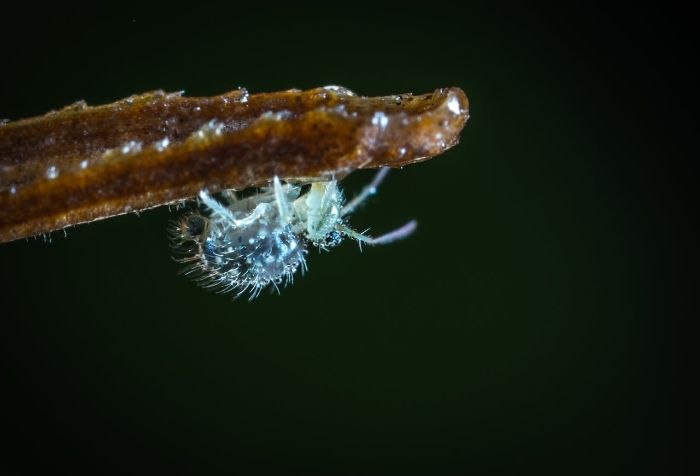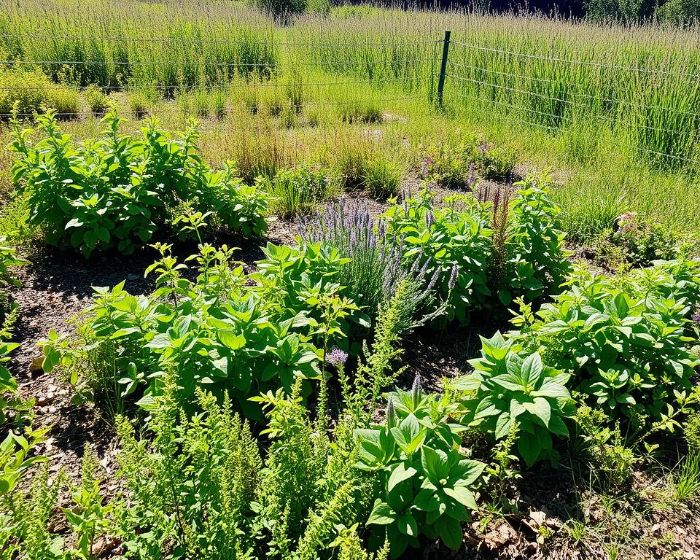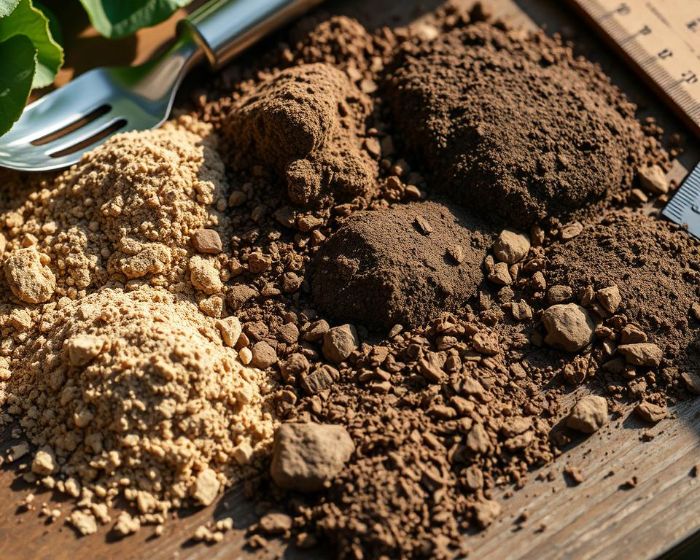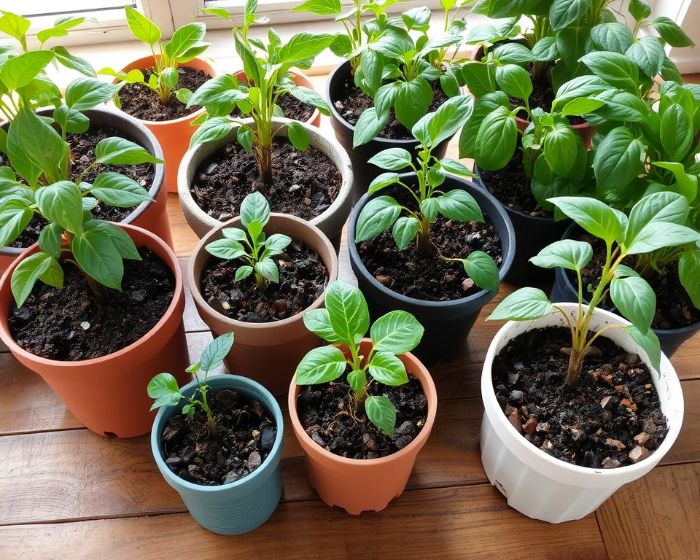Have you ever wondered how small creatures can harm your plants so much? Aphids are tiny but can cause big problems in gardens. They are very common pests that can hurt your plants a lot if not stopped early. Knowing about aphids helps you control them better.
We will look into aphids’ life and how they harm plants. This shows why it’s key to spot aphids early and stop them before they spread.
Key Takeaways
- Aphids can reproduce fast, with one female making about 80 babies in 25 days.
- They usually show up in gardens in mid-summer and can stay until fall.
- They eat plant sap, which weakens plants and can spread diseases.
- Spotting aphids early is important to manage them and stop them from getting worse.
- Natural helpers like ladybugs can help control aphid numbers.
- Using good gardening practices and planting certain plants together can prevent aphids.
Table of Contents
What Are Aphids and Why Are They Harmful?
Aphids are soft-bodied insects found in gardens and yards. They come in colors like green, black, and yellow. Knowing their life cycle helps manage them better.
Female aphids can have up to 85 babies in a month. They can have up to 15 generations in a season. This means infestations can grow fast, especially in spring.
Overview of Aphids and Their Life Cycle
The life cycle of aphids starts with live births from females. They can grow up in just days. When it’s warm, they multiply fast, leading to big populations.
Some aphids grow wings to move to new plants. This makes them hard to stop once they start.
How Aphids Damage Plants and Spread Disease
Aphids harm plants by sucking their sap. This can twist leaves and stunt shoots. It also makes plants grow poorly.
They spread diseases like cucumber mosaic virus. This affects many vegetables and flowers. Aphids also leave behind honeydew, attracting ants and yellowjackets.
To control them, wash them off, use natural predators, or low-risk pesticides. Neem oil or insecticidal soap work well.
Identifying Aphids in Your Garden
Managing aphids starts with knowing how to spot them. These pests have clear signs that help gardeners find them. Spotting these signs early can prevent damage to your garden.

Common Physical Characteristics of Aphids
Aphids are small, usually less than ¼ inch. They have pear-shaped bodies and long antennae. They come in many colors like green, black, brown, yellow, or light green.
They can lay up to 80 eggs a week in warm weather. This means their numbers can grow fast. Look for them in big groups on leaves and stems. Seeing these groups means you have an aphid problem.
Signs of Aphid Damage on Leaves and Stems
It’s important to know the signs of aphid damage. Look for:
- Misshapen or curled leaves
- Stunted growth in young plants
- Yellowing leaves
- Sticky residue on foliage, known as honeydew
- Distorted flowers or fruits
- Presence of sooty mold due to honeydew accumulation
Watching for these signs helps keep your plants healthy. Regular checks can catch aphid problems early.
Types of Aphids and Plants They Affect
Aphids are a diverse group of insects. They affect many plant species. Knowing which aphids harm which plants is key to managing pests.
There are about 1,350 aphid species in North America and 5,000 worldwide. These pests can be a big problem for gardeners.
Green, Black, and Other Aphid Species
Some aphid species are more common and harmful in gardens. Here are a few:
- Green Peach Aphid (Myzus persicae) – This species is common in home gardens. It can infest over 500 plant species.
- Cabbage Aphid (Brevicoryne brassicae) – It attacks broccoli, cabbage, cauliflower, and more.
- Potato Aphid (Macrosiphum euphorbiae) – It spreads diseases to tomatoes and potatoes. It harms many garden plants.
- Rose Aphid (Macrosiphum rosae) – Found in rose gardens, it targets different rose types.
- Woolly Apple Aphid (Eriosoma lanigerum) – It feeds on apple bark and roots. This can stunt the plant.
- Greenbug (Toxoptera graminum) – It’s a major pest of wheat and oats. It can destroy crops.
Host Plants Most Vulnerable to Aphid Infestation
Aphids like many plants, but some are more vulnerable. The most affected plants are:
- Asteraceae (Sunflower family) – Many aphid species target plants in this family.
- Rosaceae (Rose family) – Aphids like the rose aphid harm plants in this group.
- Conifers – These plants also attract aphids.
Each aphid species has its own traits and damage level. It’s important to watch and manage these pests to protect your garden.
Preventing Aphids from Infesting Your Garden
Acting early in your garden can really help stop aphids. Using cultural pest management makes your garden less welcoming to them. It also helps your plants grow strong and healthy. Simple gardening tricks can cut down aphid problems a lot.
Cultural Practices to Deter Aphids
Using certain cultural practices can keep aphids away from your garden. Keeping your plants healthy is key. They are less likely to get sick from pests. Here are some tips:
- Make sure plants get enough water and food, as stressed plants attract aphids.
- Keep your garden clean by removing debris and weeds where pests hide.
- Make a home for good bugs like ladybugs and lacewings, which eat aphids.
- Plant things like garlic and nasturtiums, which keep aphids away.
Choosing Aphid-Resistant Plant Varieties
Picking plants that don’t get aphids is a smart move. Look for plants that naturally fight off aphids. This way, you can avoid a lot of problems. Here’s how to pick the best plants:
- Choose plants that are native to your area and don’t get aphids often.
- Find hybrids or special plants made to fight pests.
- Plant different kinds of plants together to avoid big aphid problems.
Natural Predators and Biological Control Options
Using natural predators is a great way to control aphids in your garden. By making your garden welcoming to these beneficial insects, you help control pests. Ladybugs, lacewings, and parasitic wasps are key players in fighting aphids.

Attracting Ladybugs, Lacewings, and Parasitic Wasps
Ladybugs are famous for eating many aphids every day. To attract them, make your garden a nice place to live. Lacewings, or “aphid lions,” also love to eat aphids and other pests.
Parasitic wasps, like Aphidius colemani and Aphidius ervi, target specific aphids. A. colemani goes after green peach and melon aphids. A. ervi focuses on bigger aphids, like foxglove and potato aphids.
Maintaining a Balanced Ecosystem for Pest Control
A healthy ecosystem is key for controlling pests naturally. Keeping natural predators around helps control aphids and reduces the need for harmful pesticides. By using fewer broad-spectrum insecticides, you help these predators thrive.
With careful management, your garden can control aphids well with little effort. This approach leads to a balanced garden ecosystem.
DIY Organic Remedies to Control Aphids
Aphids can quickly spread and harm plants. Many gardeners use DIY organic remedies to fight them. These methods avoid harsh chemicals and help nature.
Here are some popular homemade aphid remedies:
Soap and Water Spray: Recipe and Application Tips
A soap and water mix is a top choice for fighting aphids. It works by suffocating the insects. Here’s a simple recipe:
- 2 tablespoons of liquid soap (make sure it’s safe for plants)
- 1 quart of water
Mix it in a 16-28 oz. spray bottle. Warm water makes it work better. Spray the undersides of leaves where aphids hide.
Many see dead aphids the next day. Rinse plants to get rid of soap and pests. Using it often keeps aphids away.
Neem Oil and Essential Oils for Aphid Management
Neem oil is great for controlling pests. It stops aphids from growing. Mix one part neem oil with four parts water for a strong solution.
Apply it like the soap spray, focusing on aphid hotspots. Regular use helps keep aphids under control.
Adding essential oils like garlic or peppermint oil helps too. These oils keep aphids away and attract good bugs. Using these remedies makes gardening better for the planet.

Chemical Control Options and Precautions
Chemical pest control can fight aphids, but it should be a last choice. It’s key to apply insecticides at the right time. This makes them more effective and safer for good bugs.
Understanding When to Use Insecticides
Finding the best time for chemical control is crucial. Aphids can grow fast, so watching their numbers is important. If natural ways don’t work or the problem gets big, try insecticidal soap or horticultural oils. These are gentler on good bugs than harsh chemicals.
Safety Tips for Protecting Beneficial Insects
To keep good bugs safe while using chemicals, follow these tips:
- Use insecticides in the evening or early morning to protect pollinators.
- Stay away from broad-spectrum insecticides that harm many good bugs.
- Focus on areas with aphids, not healthy plants.
- Watch local good bug populations to see how your actions affect them.
With careful planning and use of chemical pest control, you can fight aphids. This way, you also protect good bugs that keep our ecosystem healthy.
Monitoring and Maintaining Aphid Control
Keeping an eye on aphids is key to good pest management. Look for them on both sides of leaves, as they like to hide. These tiny bugs are less than 1/8 inch long.
By checking often, you catch aphid problems early. This stops them from causing big damage. Adult aphids can have up to 100 babies in a month.
Regularly Inspecting Plants for Aphid Activity
When plants are growing fast, check them often for aphids. This helps stop infestations before they get out of hand. Aphids can make plants sick with their honeydew, so it’s important to watch for them.
Adjusting Control Methods Based on Infestation Levels
Changing how you fight aphids is smart. You might use natural helpers like ladybugs or chemical sprays. If you see a lot of aphids, you might need to use a special soap spray or insecticide.
Adapting your plan helps your garden stay healthy. It also keeps aphid numbers under control.
FAQ
What are aphids and what damage can they cause to my plants?
Aphids are small, soft insects that eat plant sap. This weakens the plant, causing it to wilt and grow poorly. They can also spread diseases, making things worse.
How can I identify aphids in my garden?
Aphids are small, pear-shaped, and about 1/8th of an inch long. They are often green, black, yellow, or fuzzy. Look for them on leaves and new growth. They leave behind a sticky substance called honeydew.
What natural methods can I use to control aphid populations?
To control aphids, attract beneficial insects like ladybugs and lacewings. Keep your plants healthy and use homemade soap and water spray. These methods can help reduce aphid numbers.
When should I consider using insecticides to manage aphids?
Use insecticides only when other methods fail. If aphids are a big problem, use chemicals carefully. Make sure to target aphids and avoid harming good insects.
How often should I inspect my plants for aphids?
Check your plants often, especially when they’re growing. Look at both sides of leaves at least once a week. This helps catch aphids early.
What are some cultural practices that can help prevent aphid infestations?
Prevent aphids by watering and fertilizing right, choosing resistant plants, and attracting predators. Healthy plants are less appealing to aphids.
What are common species of aphids I should be aware of?
Watch out for Green Peach Aphid, Black Cherry Oat Aphid, and Pea Aphid. Each type prefers different plants and can cause different damage. Knowing the type helps you manage them better.
How can I attract ladybugs and other natural predators to my garden?
To attract beneficial insects, have flowers, herbs, and water. Avoid harmful insecticides. Also, provide shelter with dense foliage or ground cover.
What should I include in my soap and water spray for aphid control?
For your soap and water spray, use a plant-safe liquid soap. Mix two tablespoons with a quart of water. Spray the undersides of leaves for best results.










